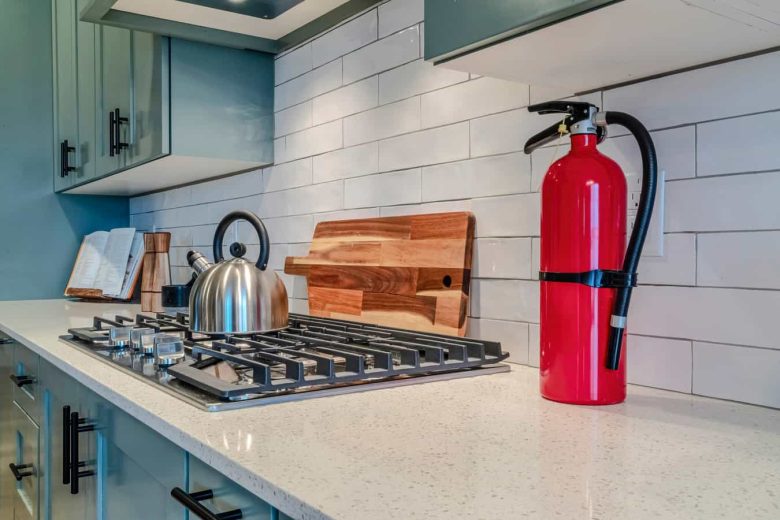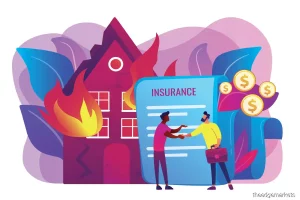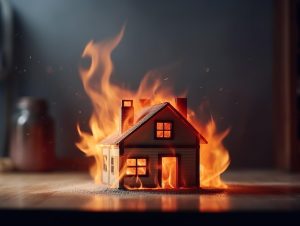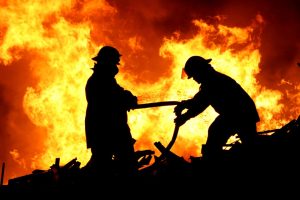A home is more than just a safe place to stay; it’s a safe place. It is also a place where loved ones and valuables can be kept safe. It is important to protect this safe place from potential hazards, such as the destructive power of fire, by equipping it with important fire safety equipment. This complete guide discusses the important fire safety tools and gadgets that everyone should consider to make their home safer, more prepared, and less vulnerable.
Smoke Detectors:
Planned Placement
Smoke detectors save lives every day, but they don’t get enough recognition. Place them strategically throughout the home, prioritizing areas where fires are most likely to break out, such as kitchens and bedrooms. Make sure there are detectors on every floor, including basements, and that batteries are tested and replaced regularly.
Smart Smoke Detector
Maybe you want a smart smoke detector with more features. These gadgets connect to your home’s Wi-Fi network and immediately send alerts to your phone when smoke is detected. Some types also come with carbon monoxide detectors, providing an extra level of safety.
Fire Extinguisher:
Multifunctional Fire Extinguisher
Every home must have at least one fire extinguisher that can be used for multiple purposes. These fire extinguishers are suitable for a variety of fires, such as those caused by flammable liquids, electrical equipment, and general flammable objects. Place them in an easily accessible place.
Good Training
It’s important to know how to use a fire extinguisher, not just to have one. Teach your family how to properly use a fire extinguisher. Learn how to effectively fight fires with the PASS method (pull, aim, squeeze, and sweep).
Escape Ladders: Safe Way to Escape from a Building
Thoughts on the Second Story
Houses with more than one floor must be equipped with fire escapes. To safely exit an upper floor when normal access is blocked, these small fold-out ladders can be used. Place them in bedrooms on higher floors, and make sure everyone knows how to use them.
Practice Every Day
Include fire escape drills in your home emergency plan. Make sure everyone can use the ladder easily by practicing setting it up from the window. Exercises can help people get used to what they need to do, making it easier to stay calm in a situation.
Fire Blankets Extinguish Fires Quickly and Effectively:
Kitchen Safety
Fire blankets are especially useful in kitchens where fires can arise from cooking. Make sure there is always a fire blanket near the stove. If you have a small grease fire, carefully place a fire blanket over the flames to extinguish it without using water.
To Extinguish a Fire Safely
Fire blankets are made of materials that do not catch fire and are designed to extinguish fires. It is important to know how to use a fire blanket correctly. It comes in a bag that you can take out and put on the stove. Leave it there until the fire is completely out.
Automatic Fire Extinguishing System:
House Sprinklers
Consideration should be given to installing automatic sprinkler systems in homes, especially in high-risk areas such as kitchens and living rooms. These automated devices can quickly extinguish fires, prevent them from spreading, and give people time to flee the area.
Installed by Professionals
Automatic sprinkler systems are usually only found in commercial buildings but are becoming increasingly accessible to homeowners. Professional construction ensures that these systems work well together, adding an extra layer of fire protection.
Carbon Monoxide Detector:
Silent and Dangerous
Carbon monoxide (CO) is a colorless, odorless, and dangerous gas. Place carbon monoxide detectors in key areas of your home, especially near bedrooms. These gadgets can detect large amounts of carbon dioxide, which can alert you to a possible gas leak from a damaged appliance or heating system.
Maintenance Tasks
Check and repair carbon monoxide detectors regularly. Test once a month, replace batteries if necessary, and replace the entire device according to the manufacturer’s recommendations. This simple maintenance can protect you from this silent threat.
Emergency Lighting: Make Escape Routes Clearly Visible
Prepare for a Power Outage
When a fire breaks out, there is often a power outage. Make sure your home has emergency lighting, such as battery-powered flashlights and exit signs. These lights can help keep you and your family safe when regular lights don’t work.
Action-Activated Lights Must be Installed
You may want to install motion-activated lighting in your hallways and stairwells. In the event of an emergency, these lights will turn on themselves to facilitate escape from the building. They also use less energy when everything is working properly.
Fireproof Safe: Keep Your Valuables Safe
Very Important Paper
Invest in a fireproof safe to safely store important documents such as insurance policies, passports, and birth certificates. These safes can withstand high temperatures, so your important documents will remain safe even in the event of a fire.
Priceless Items and Souvenirs
In addition to documents, fireproof safes can also be used to protect valuables and sentimental items. You can safely store irreplaceable jewelry, family memories, and photos. This can give you peace of mind if a fire breaks out.
Integrated Fire Protection in Home Security Systems:
View the Warning
Add fire detectors to the system that protects your home. Monitoring alarms let you and the fire brigade know if a fire is breaking out. This comprehensive approach makes the home safer overall and allows you to respond quickly to potential threats.
Monitor Remotely
Choose a security system that you can view remotely via an app on your smartphone. This way, you can receive instant alerts and view the security status of your home, including fire detection, even when you are away.
Regular Testing and Maintenance:
Check Out the Basics:
Fire safety equipment only works if it is regularly tested and maintained. Check smoke detectors, fire extinguishers, and other items regularly. To ensure continued protection, replace the battery, test the device’s features, and resolve any issues immediately.
Professional Inspection:
Hire an expert to regularly inspect your home’s fire safety systems. This includes ensuring all safety standards are met, checking wiring, and inspecting sprinkler systems. Professional inspections can ensure that your fire safety measures are effective in the long term.
Conclusion:
Purchasing important fire safety equipment is an investment in the safety and well-being of your home and the people who live there. From strategically placed smoke detectors as the first line of defense to home security systems that protect your entire home, every device is important for preparedness and risk reduction. By making your home safer from potential threats, you can make it a place where you can cherish memories and put the safety of your family and valuables first.
FAQs:
1. Why are smoke detectors considered the first line of defense for home fire safety?
Smoke detectors are crucial for early fire detection. By strategically placing them throughout the home, especially near potential fire hazards, alarms are issued in a timely manner, allowing residents to respond quickly and evacuate if necessary.
2. How do smart smoke detectors increase fire safety?
Smart smoke detectors connected to a Wi-Fi network can provide instant alerts to smartphones when smoke is detected. Some models also feature carbon monoxide detection, which provides an advanced layer of security and remote monitoring capabilities.
3. Why is proper training crucial for using a fire extinguisher?
Having a fire extinguisher is not enough; people must be properly trained in its use. Familiarity with the PASS technique (pull, aim, squeeze, and sweep) ensures effective firefighting and contributes to a safer living environment.
4. What is the purpose of a fire escape, and how should it be maintained?
Fire escape ladders are essential for safely escaping tall buildings during emergency situations. Regular exercises on deploying and using ladders increase familiarity. Maintenance involves placing them in an easily accessible location and ensuring they remain in good condition.
5. How do carbon monoxide detectors contribute to general home safety?
Carbon monoxide detectors play a crucial role in detecting this silent but deadly gas. Placing them near bedrooms and maintaining them regularly will detect potential gas leaks from faulty appliances early, improving overall home safety.



